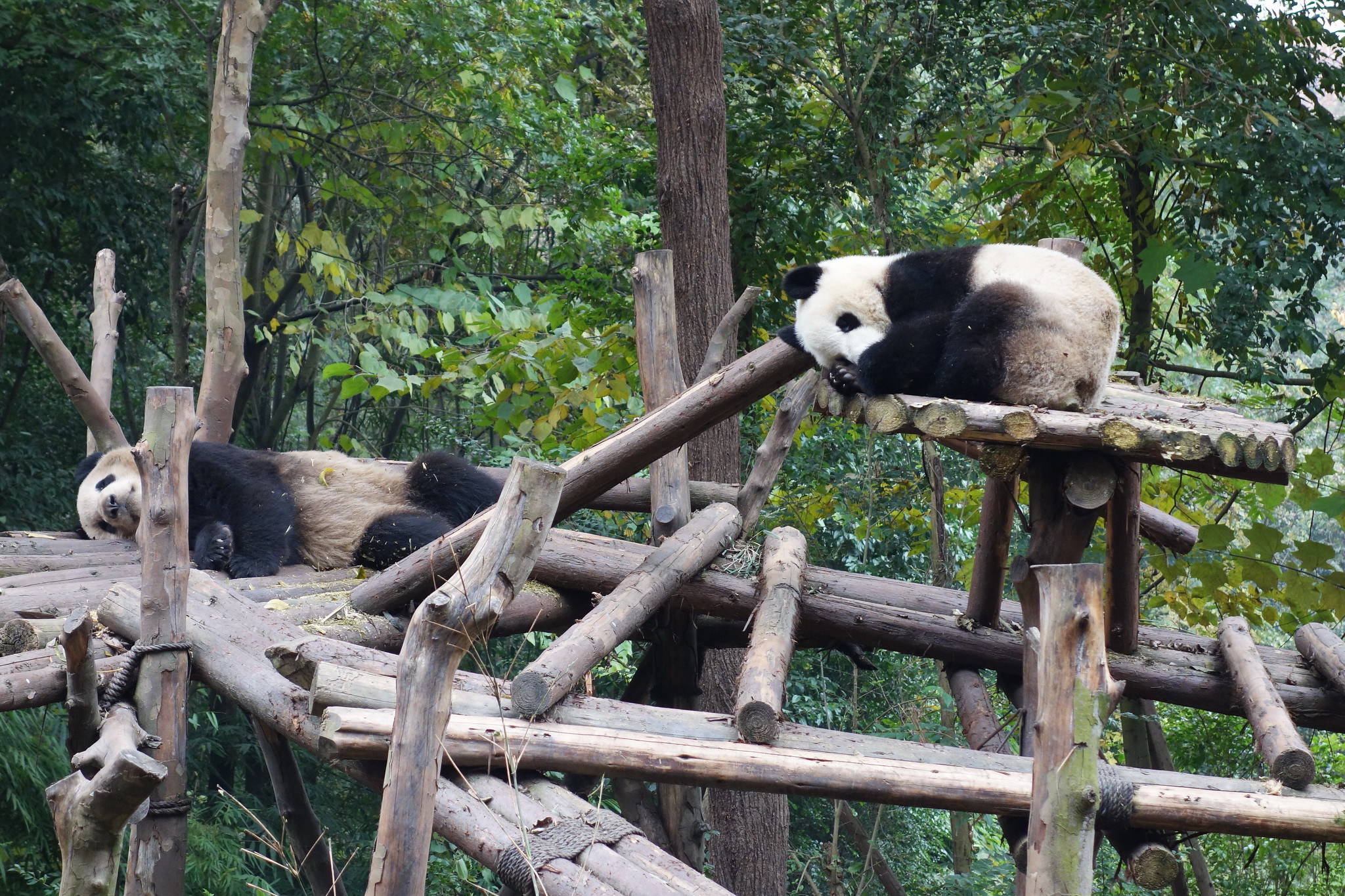The Chengdu Research Base of Giant Panda Breeding is a world-renowned conservation and research facility located in Chengdu, Sichuan Province, China. Established in 1987, the base is dedicated to the protection, breeding, and study of giant pandas, one of the world’s most endangered species. Spanning over 200 acres, the facility houses more than 100 giant pandas in a naturalistic habitat that closely mimics their native environment. The base combines scientific research, captive breeding programs, and public education to promote panda conservation and raise awareness about the species’ plight. Visitors can observe pandas in various settings, learn about their behavior and biology, and witness the center’s efforts to increase the panda population. The Chengdu Research Base has become a leading institution in giant panda conservation and has contributed significantly to the species’ recovery efforts.
Ever wondered what it’s like to care for adorable newborn pandas? Well, you’re in for a treat! The Chengdu Research Base of Giant Panda Breeding offers a unique behind-the-scenes tour that gives visitors a glimpse into the fascinating world of panda care. This exclusive experience allows you to witness firsthand the dedication and expertise required to nurture these precious creatures during their most vulnerable stage of life.
As you embark on this special tour, you’ll be greeted by knowledgeable staff members who are passionate about panda conservation. They’ll guide you through the facility, explaining the intricate process of caring for newborn pandas. One of the first things you’ll notice is the pristine environment maintained for these tiny cubs. The nursery area is kept meticulously clean and at a constant temperature to ensure the comfort and well-being of the newborns.
Moving along, you’ll learn about the round-the-clock care these little ones receive. Newborn pandas are incredibly fragile and require constant attention. The staff works in shifts to provide 24/7 monitoring and care. You might be surprised to discover that panda cubs are born pink, hairless, and blind, weighing only about 100 grams – roughly the size of a stick of butter! It’s amazing to see how quickly they grow and develop under the watchful eyes of their caretakers.
As the tour progresses, you’ll get to observe the feeding process. Panda cubs are typically fed every two hours, and the staff uses specially formulated milk to ensure they receive proper nutrition. It’s heartwarming to watch the gentle way the caretakers handle these tiny creatures, cradling them carefully as they feed them with small bottles.
One of the most exciting aspects of the tour is the opportunity to see the incubators where the youngest pandas are kept. These state-of-the-art units provide a controlled environment that mimics the warmth and security of a mother panda’s embrace. You’ll be amazed at how tiny and vulnerable these cubs look, and it’s a testament to the skill and dedication of the staff that they’re able to nurture these delicate beings into healthy, thriving pandas.
Throughout the tour, you’ll learn about the various challenges faced in panda breeding and conservation. For instance, female pandas are only fertile for a short period each year, and they often give birth to twins. However, in the wild, a mother panda typically only cares for one cub, abandoning the other. At the Chengdu Research Base, staff members have developed innovative techniques to care for both cubs, alternating them between their mother and the nursery to ensure both survive and thrive.
As you near the end of your behind-the-scenes experience, you’ll gain a deeper appreciation for the immense effort and resources required to protect and preserve this endangered species. The staff will share success stories of pandas bred at the facility that have been released into the wild, contributing to the ongoing efforts to boost panda populations in their natural habitats.
Before concluding the tour, you’ll have the chance to ask questions and even learn about volunteer opportunities for those who wish to contribute more directly to panda conservation efforts. Many visitors find this experience not only educational but also deeply moving, as it fosters a personal connection with these beloved animals and the dedicated individuals working tirelessly to ensure their survival.
As you leave the nursery area and rejoin the main part of the research base, you’ll carry with you a newfound appreciation for the complexity and importance of panda conservation. This behind-the-scenes tour offers a truly unforgettable experience, allowing you to witness the miracle of new life and the hope it brings for the future of this iconic species.The Chengdu Research Base of Giant Panda Breeding plays a crucial role in the conservation and study of giant pandas. Through its breeding programs, scientific research, and public education efforts, the facility has made significant contributions to increasing the giant panda population and raising awareness about the species’ conservation needs. The base’s success in artificial insemination and cub-rearing techniques has helped to bolster the global giant panda population, while its visitor center and educational programs have fostered a greater understanding and appreciation for these iconic animals among the public. As a world-renowned institution, the Chengdu Research Base continues to be at the forefront of giant panda conservation, serving as a model for similar efforts worldwide and offering hope for the long-term survival of this endangered species.

